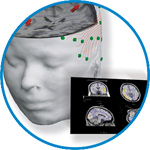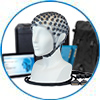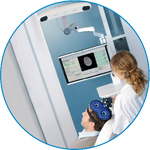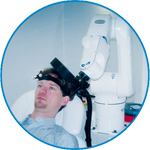- Home
- About ANT
-
Products

asa
asa is a highly flexible EEG/ERP and MEG analysis package with a variety of source reconstruction, signal analysis and MRI processing features.
.jpg)
eego mylab
The new frontier in multimodal brain research. With up to 16 kHz sampling rate, 256 EEG channels and unique software features, eego mylab gives you an unprecedented in-depth understanding of the human brain.

eego sports
eego sports offers complete freedom to collect high-density EEG data, bipolar EMG signals, and a variety of physiological sensor data, wherever and whenever required, with publish quality data in less than 15 minutes!

waveguard net
The waveguard net sets a new standard for research applications requiring high-density EEG data acquisition with quick preparation time, high flexibility, and subject comfort.

visor2
Our new and upgraded visor2 solutions integrate all the latest technologies for navigated rTMS, dual-coil navigation support, EEG-TMS recordings and pre-surgical evaluation for the highest quality in research and clinical procedures.

powerMAG ANT
The PowerMAG ANT 100 rTMS stimulator is designed for the specific needs of high-end TMS applications. Powerful high-frequency TMS as well as high precise single pulse and repetitive pulse protocols are combined in one single device.

xensor
xensor offers the solution for digitization of 3D electrode positions. xensor takes care of the whole procedure; it records, visualizes and stores positions acquired with a dedicated digitizer.

waveguard original
waveguard original is the cap solution for EEG measurements compatible with fMRI, MEG and TMS system. Use of active shielding guarantees performance in even the most demanding environments.

waveguard connect
waveguard connect EEG caps are a perfect match for hospitals and institutes aiming at reliable EEG, maximum uptime and great patient comfort! For optimal signal quality, the electrodes are made of pure, solid tin.

waveguard touch
waveguard touch is a dry electrode EEG cap. The unique Ag/AgCl coated soft polymer electrodes provide stable, research-grade EEG signals while maintaining subject comfort. The combination of these innovative dry electrodes and the industry-leading waveguard cap makes waveguard touch the best solution for dry EEG.

smartmove
smartmove allows planning of a complete TMS session ahead by defining stimulation sites based on anatomical MRI information and functional information like fMRI, PET or EEG/MEG.
Stay - References
- Support
- Events
- News
- Contact Us
You are here
Robust sensitivity to facial identity in the right human occipito-temporal cortex as revealed by steady-state visual-evoked potentials
Robust sensitivity to facial identity in the right human occipito-temporal cortex as revealed by steady-state visual-evoked potentials
<p>Understanding how the human brain discriminates complex visual patterns, such as individual faces, is an important issue in Vision Science. Here we tested sensitivity to individual faces using steady-state visual-evoked potentials (SSVEPs). Twelve participants were presented with 90-s sequences of faces appearing at a constant rate (3.5 faces/s) while high-density electroencephalogram (EEG) was recorded. Fast Fourier Transform (FFT) of EEG showed a large response at the fundamental stimulation frequency (3.5 Hz) over posterior electrode sites. This response was much larger when the face identity changed at that rate (different faces) than when an identical face was repeated. The reduction of signal in the identical face condition was not due to low-level feature adaptation, since it was observed despite changes of stimulus size, and was localized specifically over the right lateral occipital cortex. Moreover, the difference between conditions disappeared when faces were inverted. This first observation of habituation of the SSVEP to repeated face identity in the human brain provides further evidence for face individualization in the right occipito-temporal cortex by means of a simple, fast, and high signal-to-noise approach. Most importantly, it offers a promising tool to study the sensitivity to visual features of individual faces and objects in the human brain.</p>

 Read more
Read more.jpg)




